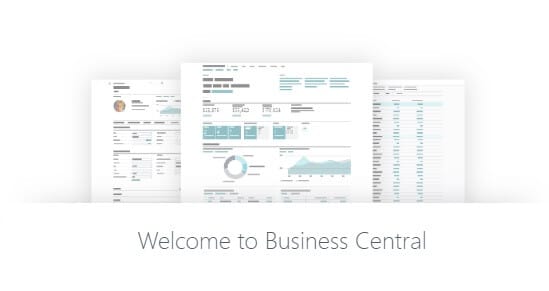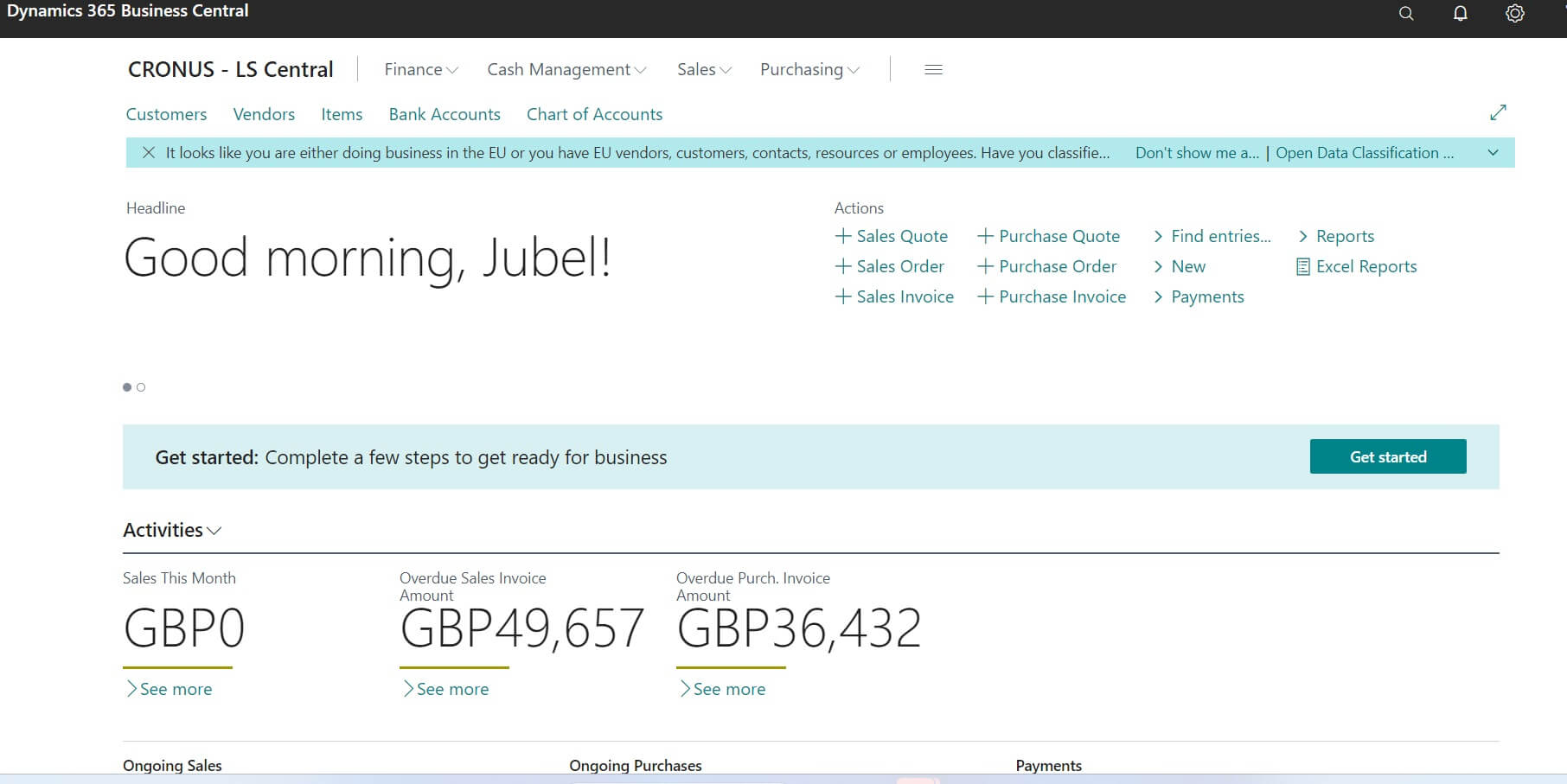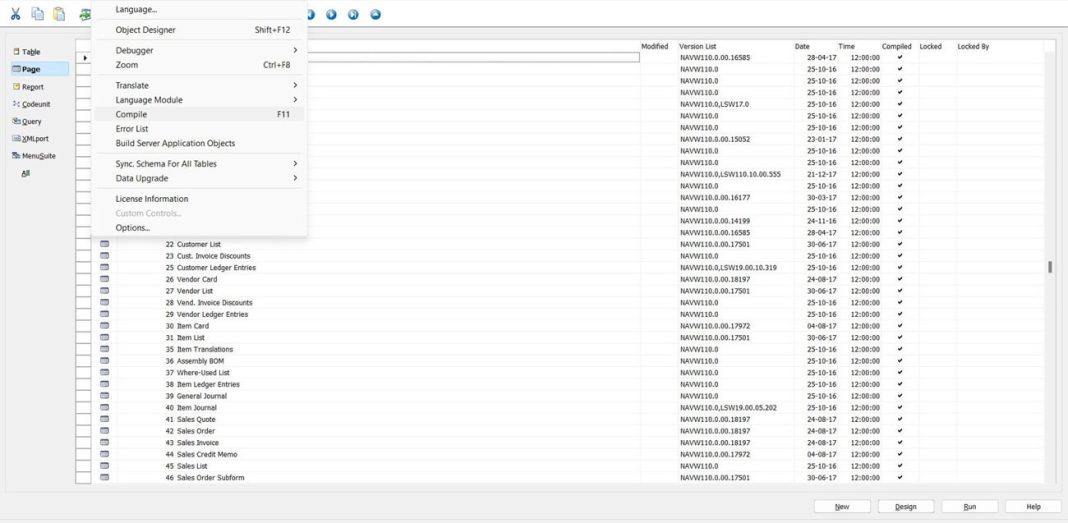Table of Contents
NAVISION / Dynamics NAV / Business Central HISTORY
Do you know about Navision History / Microsoft Dynamics NAV History / Business Central history? if not please have look. Also don’t forgot to revert your comments and share this post at the end of reading this topic. Your valuable suggestions always welcome.
The Eighties
Navision was originally founded in 1983 by Jesper Balser, Peter Bang and Torben Wind in Copenhagen, Denmark.
Business Central Products Direct Download and Version List
1984
In 1984 the product was launch as PC Plus in Denmark and Norway. This was a character-based accounting solution targeted towards the SOHO (small office/home office) market. In 1984 Beauty of Simplicity was adopted as the first company slogan.
1987
In 1987 the company changed its name to Navision and the product was renamed to Navigator. So actual Navision History Begins here.
The Nineties
1990
In 1990 the company launched Navision 3.0, and expanded the market beyond Scandinavia into Germany, Spain and the United Kingdom.
1992
In 1992, the company also reached an agreement with Peachtree Software President, Bill Goodhue, who acquired the rights to distribute Navision in the United States.
1993
In 1993 Navision initiated a major development effort to create a new generation of Navision solutions based on the Microsoft Windows 32-bit client / server platform. Another era of Navision History achieved here.
To Americanize Navision, modifications included better printing capabilities and changing the terminology of the systems. For example in Europe you book an entry and in the United States we post it.
Europeans sell product while Americans sell inventory. For the most part, Navision’s underlying business rules were completely compatible with the business rules used here in the United States. Therefore the Americanizing of Navision was more a matter of cosmetics than redesign.
1995
This product designed for the Windows 95 version and Windows NT platforms, was launched in the US market in 1995. Initially called AVISTA Software, the name was quickly changed to Navision Financials in order to better leverage Navision’s name recognition.
1997 – 1999
The company continued to enhance the product by adding contact management functionality in 1997, manufacturing capabilities in 1998, and advanced distribution in 1999.
The Two-Thousands
2000
2000 was a stellar year for Navision. In 2000 Navision Financials received Microsoft Windows 2000 Professional Certification and Microsoft Windows 2000 Server Certification.
So this year considered to be golden movements in the Navision History.
The company launched the Navision Commerce Gateway world’s first solution based on Microsoft’s BizTalk Server. The company also launched the Navision User Portal the world’s first solution based on Microsoft’s Digital Dashboard. In an industry shaking move, Navision Software merged with their long-time Danish rival Damgaard Software. (Both products were developed in Denmark and both products maintained US operations in Atlanta, Georgia. So here Navision History attached with AX products / D 365 products which come out in future. As a result, the management of both companies frequently sat next to one another in First Class when traveling between Denmark and Atlanta. This merger literally emerged on Delta airplanes).
2001
In 2001 the company made many enhancements including:
- Re-branded Navision Financials as Navision Attain and Damgaard Axapta as Navision Axapta.
- Integrated the e-commerce applications, Commerce Gateway, Commerce Portal into both products.
- Introduced User Portal, browser-based access to both products.
- Introduced supply chain collaboration functionality, manufacturing and distribution capabilities, and new financial management functionality.
- Navision received the Designed for Microsoft XP logo.
2002
In 2002 Microsoft acquired Navision for $1.4 billion the largest acquisition ever made by Microsoft. (This was a very high acquisition price considering that ACCPAC International was acquired the following year by Best Software for just $120 million; even though ACCPAC had more products and far more customers (41,000 to 1.2 million) than did Navision.)
After Microsoft acquisition Navision History made rocket move and got chance to enter different countries around the world. Thus Navision History become most remarkable.
Navision has been the fastest growing accounting system solution offered by Microsoft. Consider that in 2001, Navision’s growth rate was an astounding 32%, even though the rest of the accounting software industry had been slumping and recoiling from the impact of the Y2K bug.
Since then, the Navision software product line has grown steadily and today has approximately 35,000 customers worldwide, and more than 400,000 individual users. The Navision product’s strength and future outlook has never looked stronger.
2002
July 11, 2002 Microsoft bought Navision A/S to go with its previous acquisition of Great Plains. Navision became a new division at Microsoft, named Microsoft Business Solutions, which also handled Microsoft CRM.
2003
Microsoft announced plans to develop an entirely new ERP system (Project Green). But it later decided to continue development of all ERP systems (Dynamics AX, Dynamics NAV, Dynamics GP and Dynamics SL).
Dynamics NAV History Begins here.
Microsoft launched all four ERP systems with the same new role-based user-interface, SQL-based reporting and analysis, SharePoint-based portal, Pocket PC-based mobile clients and integration with Microsoft Office.
2005
Microsoft re-branded the product and re-released it as Microsoft Dynamics NAV.
2008
December 2008 Microsoft released Dynamics NAV 2009, which contains both the original “classic” client, as well as a new three-tier GUI called the RoleTailored Client (RTC).
2013
October 2013, Microsoft released Dynamics NAV 2013, which was available with the RTC only, and introduced support for 64-bit Windows operating systems as well as a redesign of storing dimension sets, interoperability with SharePoint, and a web client.
2014
October 2014, Microsoft released Dynamics NAV 2015. This version’s improvements feature the tablet client, document reporting using Microsoft Word, Bank Integration, and more.
2015
October 2015, Microsoft released NAV 2016 features enhancements in reporting and email integration, deferral accounting, and posting preview function.
2016
Microsoft Dynamics NAV 2016 announced with important features like Extensions, Workflow, Native integration with Microsoft Azure SQL database, Automated testing. etc. This considered to last version released for most of the localization countries like India with Dynamics NAV with GST.
2017
Microsoft Dynamics NAV 2017 announced with important features like Vendor Approval , Item Approval , Item Price change approval etc.
2018
Microsoft Dynamics NAV 2018 announced with important features like Image Analyzer , Employee ledger entries, Integration API etc.
From this year new era begins, Renamed product to Business Central. Also started releasing 2 major releases in an year April and October Month.

Microsoft announced all new product D 365 Business Central 2018 (Version 12 ). Thus Business Central History begins here.
This one supports Docker interface development of extensions.
Second generation Extension Management.
Business Central October 2018 (13), This was the 2nd series on the Business Central edition. This one added following features Late Payment Predictions , Permission set editable
2019
In 2019 also Microsoft relased 2 new products Business Central April 2019 (14) and Business Central October 2019 (15). Added another milestone to Business Central History. With following important features Bult Import Item Images, Change Descriptions on GL Entries , Copy Items , Use physical inventory orders to better structure your physical inventory counting, Home page and navigation menu customization , Enhancements to Excel Integration , Full keyboard shortcut support , Multi-tasking across multiple pages. Thus Business Central History streamline a little bit from here.
Business Central 2019 Wave 2 Features
2020
Microsoft released 2 new products Business Central April 2020 (16) and Business Central October 2020 (17).
Following are important features Auto-insert recurring sales and purchase lines, Notify requester about all changes for an approval request , Receive more items than ordered , Revert Qty. to Invoice when cancelling order , Import profiles and UI customizations , Ability to see current database locks etc.
Business Central 2020 Wave 1 Features
2021
In 2021 Microsoft released 2 new products Business Central April 2021 (18) and Business Central October 2021 (19).
Following are important features: Assisted setup helps move the task of adjusting item costs to the background, Dimension corrections (for G/L Entries) , Data cleanup tasks page , Locations for non-inventory items , Rounding for base unit of measure etc. So this added another milestone to Business Central History
2022
In 2022 Microsoft released 2 new products Business Central April 2022 (20) and Business Central October 2022 (21)
2023
In 2023, Microsoft released 2 new products Business Central April 2023 (22) and Business Central October 2022 (23)
Although hundred’s of new features introduced striking one found for this version is Drive sales with AI-generated product descriptions. The Business Central utilizes Azure OpenAI and GPT technology to generate a captivating product description by leveraging the item’s attributes, category, and name (description) and “Renumber Document Numbers” feature in item journals.
For the Developers found remarkable feature most awaited “AL Explorer and AL Home in Visual Studio Code AL extension“. This will easier the object explore and book mark the favorite objects etc. Another feature found is “Deploy hotfixes for older AppSource apps” to easy hotfix.
Business Central October 2023 Wave 2 Features
2024
In 2024, Microsoft released 1 new products Business Central April 2024 (24)
Some of the important features released on this version are Chat with Copilot, Create sales lines easily with Copilot , Ask Copilot for help with fields , Use AL-controlled barcode scanning for all scenarios , Handle multiple file uploads , Debug the System application , Share error details to get help from another user , Access worksheet pages from mobile phones.
Upcoming Version is Business Central October 2024 (25)




